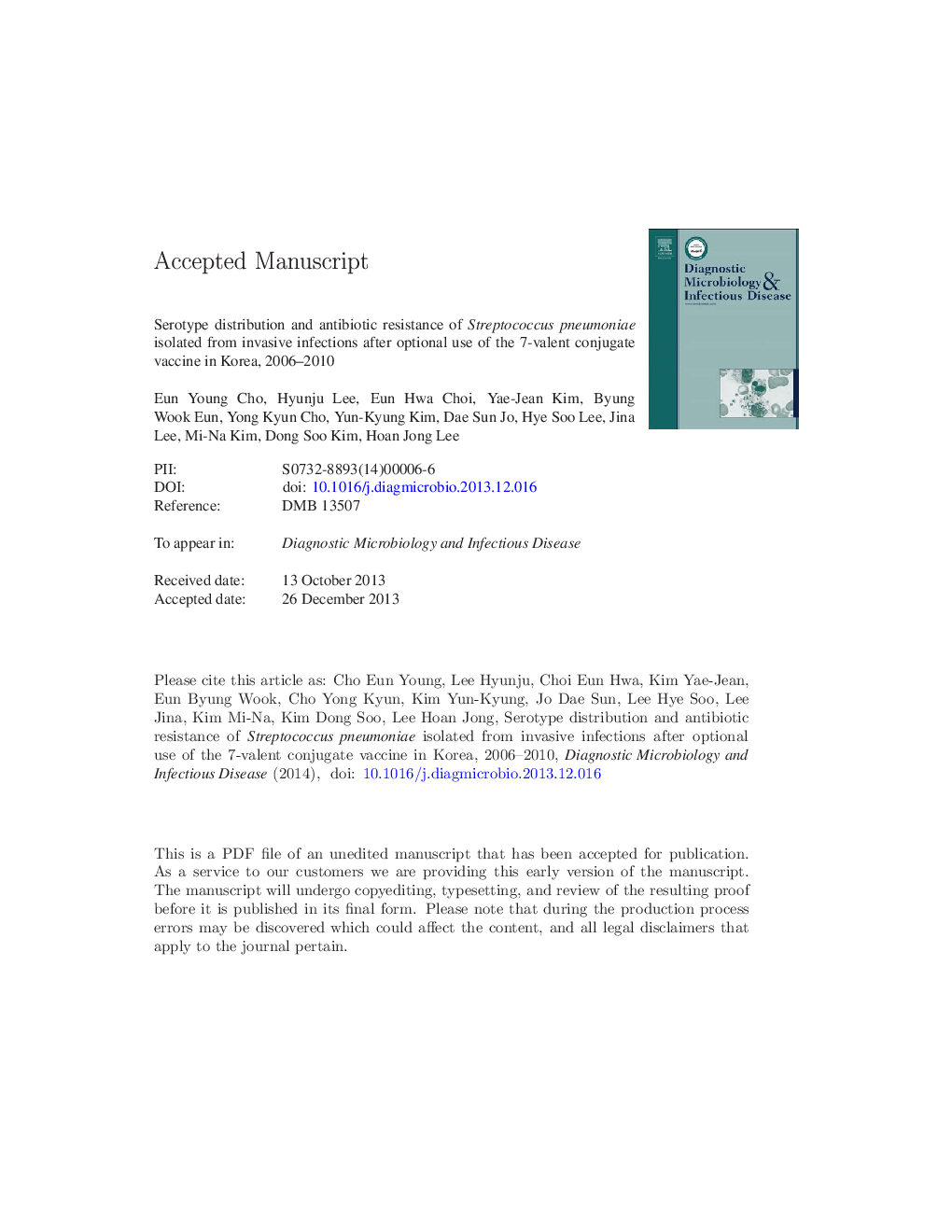| Article ID | Journal | Published Year | Pages | File Type |
|---|---|---|---|---|
| 6115779 | Diagnostic Microbiology and Infectious Disease | 2014 | 30 Pages |
Abstract
This study examined the serotype distribution and antimicrobial resistance of pneumococcal isolates from invasive infections in children between 2006 and 2010, when the 7-valent pneumococcal conjugate vaccine (PCV7) was offered as an optional vaccine in Korea. Among 140 isolates collected from 8 centers, the common serotypes were 19A (22.9%), 19 F (12.1%), and 6B (8.6%). Between 2006 and 2010, PCV7 serotypes decreased from 62.5% to 21.4% (P = 0.002), whereas three 13-valent pneumococcal conjugate vaccine (PCV13)-specific serotypes (3, 6A, and 19A) increased from 18.8% to 42.9% (P = 0.016). Among 102 multidrug-resistant isolates, the proportion of PCV7 serotypes decreased from 65.2% to 21.7% (P = 0.001), and 3 PCV13-specific serotypes increased from 17.4% to 47.8% (P = 0.008). Optional PCV7 vaccination has influenced the proportion of PCV7 serotypes in Korea, resulting in a decrease, whereas the proportions of 3 PCV13-specific serotypes, particularly 19A, have increased.
Related Topics
Life Sciences
Immunology and Microbiology
Applied Microbiology and Biotechnology
Authors
Eun Young Cho, Hyunju Lee, Eun Hwa Choi, Yae-Jean Kim, Byung Wook Eun, Yong Kyun Cho, Yun-Kyung Kim, Dae Sun Jo, Hye Soo Lee, Jina Lee, Mi-Na Kim, Dong Soo Kim, Hoan Jong Lee,
